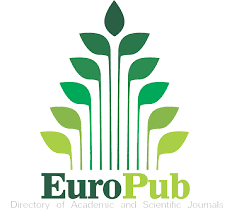ECONOMIC GROWTH AND ENVIRONMENTAL MANAGEMENT IN THE MANUFACTURING INDUSTRIES OF ECUADOR. STRATEGIES TOWARDS A CIRCULAR ECONOMY MODEL
DOI:
https://doi.org/10.24265/iggp.2023.v10n1.08Keywords:
Sustainability, circular economy, economic growth, environment, production, consumptionAbstract
One of the Sustainable Development Goals (SDG) promoted by the United Nations is responsible production and consumption through the efficient use of energy, contributing to the maximization of environmental benefits and
minimization of resource use, contributing to sustainable development in order to counteract the consequences of the linear production model. That is why in the present research the gap between economic growth and environmental management was analyzed, as well as its degree of correlation and causality in the manufacturing industries of Ecuador. For the development of this study, the economic growth trend of the sector and the
evolution of environmental management evaluated between 2016 to 2020 and the projected perspectives to 2022 are observed. National databases validated through the Ecuadorian Institute of Statistics and Census (INEC) were used for the analysis. Data were analyzed using RStudio software through time series and ARIMA models with Dickey-Fuller stationarity tests, white noise tests with Ljung Box Test and correlation studies with Pearson’s R test. The results obtained show the current economic and environmental situation of the manufacturing industry,
as well as its prospects and growth trends towards a sustainable production model. Finally, strategies that could be adopted by industries to enter into a circular economy and sustainability model are proposed.
Downloads
References
Agurto, A. (2018). Relación entre crecimiento económico y manufactura en Ecuador usando técnicasde cointegración. Revista Vista Económica, 4(1), 70-82.https://revistas.unl.edu.ec/index.php/economica/article/view/509
Aldás, D., Molina, N., Pérez, L. y Zurita, M. (2018). Análisis de los tiempos de preparación para la reducción de desperdicios en el proceso de troquelado. Caso aplicado industria de calzado. INNOVA Research Journal, 3(10), 149–160. https://doi.org/10.33890/INNOVA.V3.N10.2018.649
Almeida, M. y Díaz, C. (2020). Circular Economy, a Strategy for Sustainable Development. Advances inEcuador. Estudios de La Gestión, 8, 35-57. https://revistas.uasb.edu.ec/index.php/eg/article/view/2407/2199
ARCONEL. (2020). Balance Nacional de Energía Eléctrica - ARCONEL.https://www.regulacionelectrica.gob.ec/balance-nacional/
Arroyo, F. (2018). Vista de La economía circular como factor de desarrollo sustentable del sectorproductivo.INNOVA Research Journal, 3(12), 78-98. https://revistas.uide.edu.ec/index.php/innova/article/view/786/909
Borowski, P. (2021). Digitization, Digital Twins, Blockchain, and Industry 4.0 as Elements of Management Process in Enterprises in the Energy Sector. Energies, 14(7), 1885. https://doi.org/10.3390/en14071885
Calle, N., Pincay, R. e Illezcas, M. (2020). Economía circular: desafíos para una visión estratégica de las empresas exportadoras. Compendium: Cuadernos de Economía y Administración, 7(3), 120–135. https://doi.org/10.46677/COMPENDIUM.V7I3.865
CEPAL (2019). ODS 12: Garantizar modalidades de consumo y producción sostenibles en AméricaLatina y el Caribe 1. https://www.cepal.org/sites/default/files/static/files/ods12_c1900731_press.pdf
Cosgrove, J., Doyle, F. y Van Den Broek, B. (2019). A case study analysis of energy savings achieved through behavioural change and social feedback on manufacturing machines. In Smart Innovation, Systems and Technologies, 155. https://doi.org/10.1007/978-981-13-9271-9_27
Ellen Macarthur Fundation. (2020). Hacia una economía circular: motivos económicos para unatransición acelerada.
Garabiza, B., Prudente, E. y Quinde, K. (2021). La aplicación del modelo de economía circular en Ecuador: Estudio de caso. Espacios, 42(2), 222–237. https://doi.org/10.48082/espacios-a21v42n02p17
Gómez, M. (2021). Economía circular: una contribución a la competitividad dentro de la industria textil colombiana. https://repository.uamerica.edu.co/handle/20.500.11839/8333
Howard, M., Hopkinson, P., & Miemczyk, J. (2019). The regenerative supply chain: a framework for developing circular economy indicators. International journal of production research, 57(23, SI),7300-7318.https://doi.org/10.1080/00207543.2018.1524166
INEC. (2020). Boletín Técnico -2020-IPI-M. In Boletín. www.ecuadorencifras.gob.ec
INEC. (2021). Nota metodológica índice de producción de la industria manufacturera IPI-M. www.ecuadorencifras.gob.ec
Porcelli, A. y Martínez, A. (2018). Legislative analysis of the circular paradigm economy. RevistaDireito GV, (3), 1067–1105. https://doi.org/10.1590/2317-6172201840
Prado-Carpio, E. y Castro, C. (2017). Energy intensity of ecuador and estimate of carbon footprint. Revista Universidad y Sociedad, 9(2), 232–236. http://scielo.sld.cu/scielo.php?script=sci_arttext&pid=S2218-&nrm=iso
Reyes, J., Mula, J. y Díaz-Madroñero, M. (2021). Development of a conceptual model for lean supplychain planning in industry 4.0: multidimensional analysis for operations management. Production Planning and Control. https://doi.org/10.1080/09537287.2021.1993373
Rowntree, D., Chiappa, C. y Vasco Montoya, E. (1984). Introducción a la estadistica : un enfoque no matemático. Editorial Norma.
Roy-García, I., Rivas-Ruiz, R., Pérez-Rodríguez, M. y Palacios-Cruz, L. (2019). Correlación: no todacorrelación implica causalidad. Revista Alergia México, 66(3), 354–360. https://doi.org/10.29262/RAM.V66I3.651
Sánchez, A., Vayas, T., Mayorga, F. y Freire, C. (2021). Valor agregado Bruto-VAB Ecuador. https://fca.uta.edu.ec/v4.0/images/OBSERVATORIO/dipticos/Diptico_N64.pdf
Sánchez, I. y Moreno, J. (2016). The challenge of economic growth in Mexico. Manufacturing industries and industrial policy. Revista Finanzas y Politica Economica, 8(2), 271–299. https://doi.org/10.14718/revfinanzpolitecon.2016.8.2.
Sanmartín, G., Zhigue, R. y Alaña, T. (2017). El reciclaje: un nicho de innovación y emprendimiento con enfoque ambientalista. Revista Universidad y Sociedad, 9(1), 36-40. http://scielo.sld.cu/scielo.php?script=sci_arttext&pid=S2218-36202017000100005
Uquillas, A. y González, C. (2017). Modelo Macro para Pruebas de Tensión de Riesgo de Crédito de Consumo en el Sistema Financiero Ecuatoriano. Revista de Análisis Estadístico, 14(2), 75 - 99. https://www.ecuadorencifras.gob.ec/documentos/web-inec/Revistas/Analitika/Anexos_pdf/Analit_14/3a.pdf
Varela, J., Tutora, M. y García, M. (2018). La economía circular. Una propuesta de futuro para España y Europa. Repositorio Universidad de Coruña. https://ruc.udc.es/dspace/handle/2183/21053
Venegas, M. (2020). Industria 4.0 y economía circular-Aplicación práctica en remanufactura industrial. Revista Multidisciplinar Ciencia Latina, 5(6), 14623-14638. https://doi.org/10.37811/cl_rcm.v5i6.1422
Wilts, H. (2017). Key Challenges for Transformations Towards a Circular Economy – The Status Quo in Germany. International Journal of Waste Resources, 7(1). https://doi.org/10.4172/2252-5211.1000262

Downloads
Published
Issue
Section
License
Copyright (c) 2022 Darwin Aldas Salazar, Helder Barrera Erreyes, Héctor Luzuriaga Jaramillo, Jorge Abril Flores

This work is licensed under a Creative Commons Attribution-NonCommercial-ShareAlike 4.0 International License.














